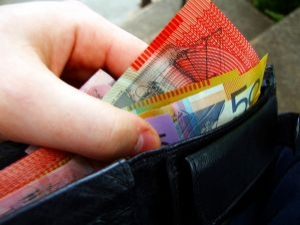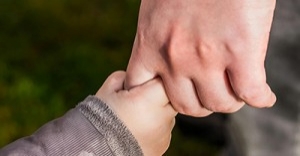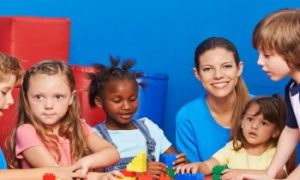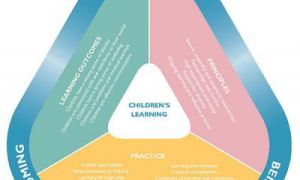

Early childhood education thrives on diversity. Multicultural teams bring rich perspectives, lived experiences, and linguistic variety that enhance learning environments for children and educators alike.
In this article, we explore how services can support respectful language use, address feelings of exclusion, and uphold the principles of the Early Years Learning Framework (EYLF) and National Quality Standard (NQS)—without compromising identity or connection.
Introducing diversity through books is a fantastic way to help children understand and appreciate different cultures, identities, and perspectives. It provides an opportunity to discuss similarities and differences between children's life and the characters in the book. The following article provides a list of 20 Best Books For Children About Diversity, Main Themes Explored In These Books, Diversity and the NQS and more.
The following article lists 20 Cultural Games, Instructions For Each Game, Benefits Of Teaching Children These Games, Linking To The EYLF and more.
Ensuring safe Holi colors for children is essential to protect their skin and overall health. The following article provides DIY Natural Holi Colours, Recipes for Holi Colors with Rice Flour, Fun Ways to Play with Holi Colours, Holi Safety Tips For Children and more.
Learning simple words in different languages can create an inclusive and engaging learning environment. The following article provides essential words that can be used with children within the learning environment who are learning English in Mandarin, Arabic, Vietnamese, Italian, Hindi, Greek, Spanish, Tagalog/Filipino, Korean, Canotnese, and Punjabi.
Reading books about diversity to children helps them understand and appreciate the many ways people can be different and yet similar. These differences can be in appearance, culture, language, beliefs, and abilities. The following article provides a list of children's books about diversity.
In this free online course, you will learn about the diversity of families, LGBTQ+ parented families precisely and how diversity is a positive part of Australian society. You will learn how to create learning opportunities for 0-8-year-olds that enable children to explore family diversity in an education and care setting.
Animals In Different Languages list the names of animals in 20 different languages spoken throughout Australia. These are very helpful for Educators to teach children animals in different languages.
Colours In Different Languages list colours in 32 different languages spoken throughout Australia. These are very helpful for Educators communicating with children where English isn't their first language and also teach children colours in different languages.
 As an Educator in Australia, your pay rate falls under the Children’s Services Award 2010. This award states the minimum amount that an employer can… Read More
As an Educator in Australia, your pay rate falls under the Children’s Services Award 2010. This award states the minimum amount that an employer can… Read More
 When working as a qualified Early Childhood Teacher (with a university degree) within a service, your rate of pay will come from the Educational Services… Read More
When working as a qualified Early Childhood Teacher (with a university degree) within a service, your rate of pay will come from the Educational Services… Read More
 When working as a Diploma Qualified Educator your pay rate is from the Children's Services Award 2010. This Award states your minimum rate of pay… Read More
When working as a Diploma Qualified Educator your pay rate is from the Children's Services Award 2010. This Award states your minimum rate of pay… Read More
 When working as a Cert 3 Qualified Educator, your pay rate is from the Children's Services Award 2010. This Award states your minimum rate of… Read More
When working as a Cert 3 Qualified Educator, your pay rate is from the Children's Services Award 2010. This Award states your minimum rate of… Read More
 Educational Leaders play a crucial role in their early childhood service by ensuring that the educational program aligns with best practices and supports the holistic… Read More
Educational Leaders play a crucial role in their early childhood service by ensuring that the educational program aligns with best practices and supports the holistic… Read More
 In early childhood education and care, ratios are more than a technicality—they are a frontline safeguard. Every child deserves responsive supervision, emotional connection, and developmental… Read More
In early childhood education and care, ratios are more than a technicality—they are a frontline safeguard. Every child deserves responsive supervision, emotional connection, and developmental… Read More
 Here’s a comprehensive Mobile Phone and Smart Watch Policy tailored for early childhood education and care (ECEC) services in Australia, aligned with the latest 2025… Read More
Here’s a comprehensive Mobile Phone and Smart Watch Policy tailored for early childhood education and care (ECEC) services in Australia, aligned with the latest 2025… Read More
 With the new national child safety reforms kicking in on 1 September 2025, early childhood services like yours have a real opportunity to lead the… Read More
With the new national child safety reforms kicking in on 1 September 2025, early childhood services like yours have a real opportunity to lead the… Read More
 The Sea of Fish Challenge is a national initiative that invites children, educators, families, and communities to create and display fish artworks as a symbol… Read More
The Sea of Fish Challenge is a national initiative that invites children, educators, families, and communities to create and display fish artworks as a symbol… Read More
 Across the early childhood education and care sector, educators are sounding the alarm: current staffing ratios are insufficient to deliver safe, meaningful, and developmentally appropriate… Read More
Across the early childhood education and care sector, educators are sounding the alarm: current staffing ratios are insufficient to deliver safe, meaningful, and developmentally appropriate… Read More

The approved provider of an early childhood service, you have the primary legal responsibilities for...
See more...
The EYLF is a guide which consists of Principles, Practices and 5 main Learning Outcomes...
See more...
The “Preschool Room” is final step for you, as a childcare professional, to prepare your...
See more...© 2009-2025 Aussie Childcare Network Pty Ltd. All Rights Reserved.
